Knife throwing has been around for a long time. Just how long is unknown, but we do know that soldiers in the American Civil War used the sport to pass time in camp. It has endured the ages as an art, a sport, and an entertainment method.
[the_ad_placement id=”in-text-1-type-r”]That being said, it’s important to know how to throw a throwing knife before giving it a try. The good news is that it is a fairly easy thing to learn.
Choosing a throwing knife and target
Before you begin, you need a knife, but not just any knife will do it. You need a knife specifically designed for throwing. Some throwers make their own knives, but this is an advanced aspect to the sport to be discussed later.
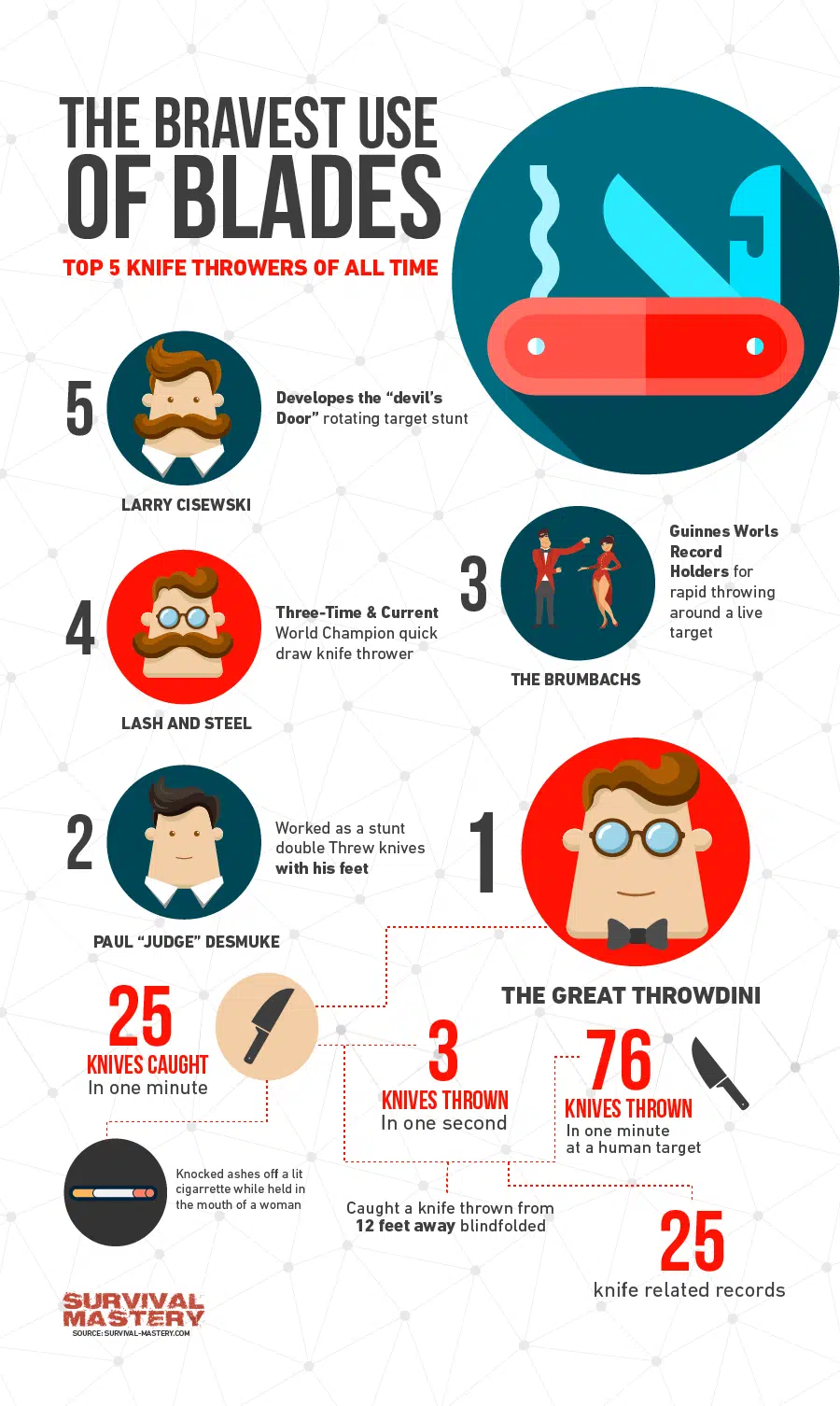
A good throwing knife will have the following characteristics:
- Dull edges
- Sharp point
- Rounded corners
- Thick enough the tip will not bend on impact
- Least perforations or cut-outs in the design
- No fancy grips or handles
- Weigh at least 10 to 12 ounces
- At least 12 inches long
As a beginner, go for simple designs without embellishments (a good beginner knife is this set from Smith and Wesson). This will help you learn to throw more accurately and plain knives are easier to throw.
If there is not a shop near you that sells throwing knives, you can find plenty online at cheap prices in all shapes and sizes usually in groups of three. Keep in mind, as you choose your knives, that you are looking for something that possesses the proper weight, length, and appears that it will stick in your target when thrown. We have a great set of reviews in our article on the best throwing knives on the market, so don’t forget to check it out!
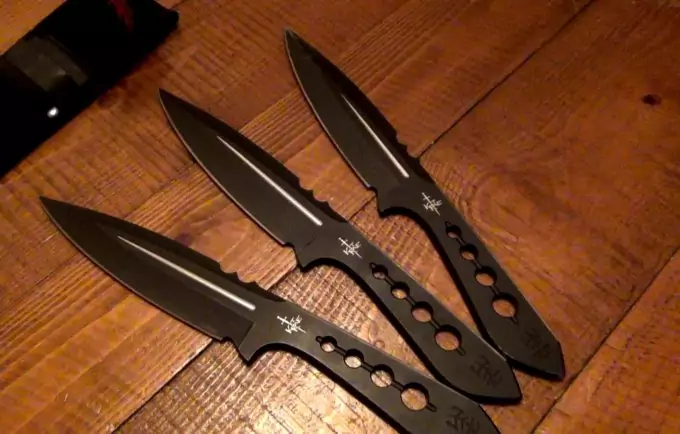
The go-to target material for knife throwing is wood (check here the ideal target board). If you do one by yourself, try to get a round section of a large log (this would be ideal). However, in the case you can’t do that, check out these other ideas:
- Planks – Wood planks will work fine if that’s what you have laying around; the wider, the better.
- Lumber yards – Check with your local lumber yard and see if you can claim any log scraps they might normally throw away.
- Firewood dealers – Check classifieds for local sources of firewood. This can be a cheap, and sometimes free, solution.
- Friends – People cut down trees every day. You could be the answer to someone else’s problem.
Best types of wood are soft woods like Cottonwood, Pine, or Poplar. Your knives will stick in them easier as the wood is soft. A knife will bounce off of hardwoods like Oak, and plywood which is why they are a bad choice unless you are using small knives.
Goals of knife throwing and initial safety
The most basic goals to knife throwing are accuracy and the stick. These goals can be perfected by adjusting your distance from the target and the throwing technique you choose to use. The next goal to strive for is consistency. Practice your techniques until you are accurate more times than not. Then you can try different techniques and knives to diversify your skills.
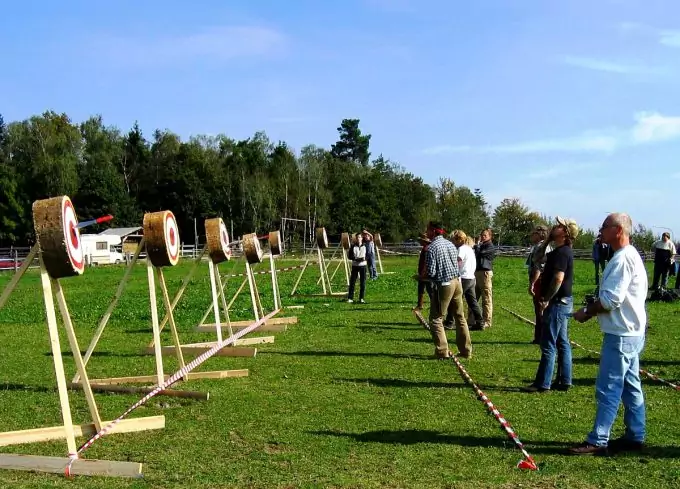
Throwing safely is mostly about common sense: don’t practice barefoot. Take time to go through a few quick safety procedures before you begin. These are a good place to start:
- Practice away from people and pets
- Set your target away from houses, cars, gas grills, etc.
- Let anyone in the vicinity know what you are doing and where
- Pay attention
- Use proper equipment
- Carry a kit with a file to remove burrs from your knives, tweezers for splinters, and a cloth to wipe both your knives and your hands
Also, don’t forget to check our guidelines on knife safety that also include more details about throwing knives and safety regulations..
You are ready now to practice handling some knives so give it a try with this piece of jewelry from United Cutlery.
Throwing stance and knife grip
With many sports, there is a certain form to practice to be good and knife throwing is no exception. As you practice your stance, be mindful of your footing and your posture – this will help you understand knife throwing techniques more quickly.
Here are the main elements of a good throwing stance:
- A relaxed body. This isn’t brain surgery, and should relieve stress rather than create it
- Standing up straight for a better, more accurate, throw
- Place your right foot forward with the left foot slightly behind or the other way around for lefties
Try it out and get comfortable with your stance. Be loose and relaxed, but focused. You should try throwing a baseball at your target while practicing your stance until it feels natural. There are two ways to throw a knife: by the handle or by the blade and the technique is decided by the knife. Hold the knife and determine which end is the heaviest as you’ll want to throw the heavy end first to achieve more force going into your target.
[the_ad_placement id=”in-text-2-type-r”]Once the grip end is determined, hold the knife with your index, middle, and ring finger with your thumb on the opposite side. Position your thumb and fingers in the center of the knife and near the end so that your pinky hangs off and just curls with your hand. If this grip doesn’t feel natural or work well for you, try some of the bellow variations while practicing your throwing.
- Hammer grip – Take the knife in a horizontal orientation. Grip it with your entire hand like you would the handle of a hammer. Rest your thumb in the center on the side.
- McEvoy grip – Take the knife in a vertical orientation. Grip it with your entire hand like a hammer and rest your thumb on the top edge.
- Pinch grip – Pinch the tip of the knife between your thumb and second knuckle of your index finger. Curl the rest of your hand into a fist-like grip.
- Slider grip – Position the knife in parallel with the palm of your hand as if it were an extension of your middle finger. Lay your thumb across it like you are making the number 4 with your hand to hold the knife in place.
Exercise caution when you experiment with these grips. Also, if you are looking for a balanced knife, with a handle that offers a good grip, check out the Gil Hibben Cord Grip Set
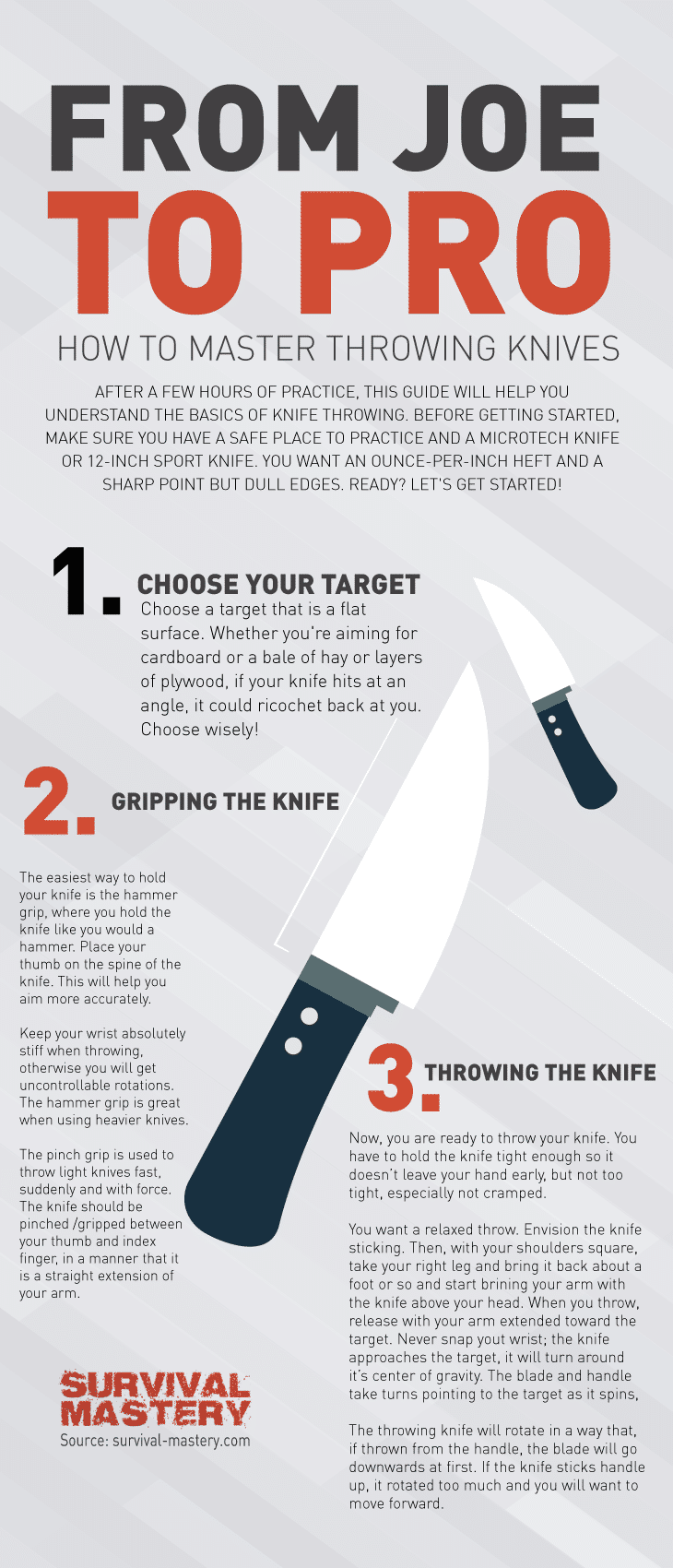
These variations change the dynamic of your throw, so pay attention to where your knives are going. Knife throwing is a situation of trial and error. It is not difficult to learn, but you must keep trying until you find what suits you best.
Mastering the half-spin throw
The half-spin is the most popular knife throw and it works just like it sounds: the knife performs a half-spin in the air between your hand and the target. Start practicing about 15 feet from the target and adjust the distance according to your need:
- Square your shoulders toward your target, and assume your stance
- Grip your knife and raise it as if you are about to hammer a nail into a wall at eye level in front of you
- Reach back, and step into a moderate throw. Don’t try to throw it as hard as you can
- Simply release the knife when it’s out in front of you. Don’t snap your wrist
- Follow through as you would on a baseball throw
If your knife stuck, congratulations! You just executed a successful knife throw. If your knife bounced off your target, check the following:
- That the point of your knife is sufficiently sharp
- Your target wood is soft
- You are the right distance from the target
- Your throw has enough force
Make one correction to your throw at a time until you achieve the desired result.
Here’s a tip to try if you are having trouble getting your knife to stick in your target and nothing else seems to be working. Imagine the rotation of your knife in the air. Throw it in such a way that the force of the rotation continues when the tip strikes the target.
Imagine the tip sort of hooking into the target and embedding deeper in the wood. You will most likely need to alter your grip to accomplish this. Also, this will work best with a handle-grip knife.
Throwing a knife with no spin
Also known as the ¼ spin technique, this style has the knife making only ¼ spin in the air before striking the target. This calls for some adjustments to both distance and grip. Since you will be exercising half the spin, you should position yourself roughly halfway closer to the target.
So if your normal half-spin distance is 15 feet, you need to be about 7 to 8 feet from your target. Throwing distance is unique to the thrower, so adjust accordingly.
The grip for this throw is different as well and works best with a balanced knife. Practice using the following technique:
- Assume your normal throwing stance
- Grip your knife by the handle between your thumb and the second knuckle of your middle finger as close to the end as possible
- Rest your index finger along the back edge of the handle near the blade and curl the rest of your fingers naturally with your hand
- Raise the knife with the tip pointing to the sky
- Bend at your shoulder instead of your elbow
- Practice pointing the tip of your knife toward the target a couple times
- Wind up, step into your throw, and release the knife when the tip is pointing at your target
- Follow through ending your throw with your index finger pointing at the ground
This throw is quite a bit more difficult than the half-spin method. It is less natural and will most likely take practice to perfect since it is considered an advanced technique.
Full-spin throw
If your throw is strong, and you are sinking the tips of your knives deep into your target, then why not give the full-spin a try. As with the ¼ turn, you must adjust your distance from the target. This time, you will move in the opposite direction.
For example, if you throw accurately from 12 feet on the half-spin throw, you need to double that for the full-spin so you are standing 24 feet from the target. However, there’s a twist. You must take the length of your arm into account on this throw, so back up an arm’s length in addition to doubling your normal distance.
At this point, run through your normal throwing procedure until you hit the target accurately and you knife sticks consistently. As usual, you need to adjust the different variables accordingly.
The spin and a half, and two-spin throws
You can stretch it out as far as you like. Competition goes up to two spins if that’s something in which you’d like to participate. As with the full-spin throw, distance is your main variable with longer throws, followed by adjustments to your distance and throw strength. It’s suggested that you master the spins and physics of the throws before you try for competition distances which are quite short.
[the_ad_placement id=”in-text-3-type-r”]Learning how to throw knives goes well beyond mastering your stance, grip, and various throws. Throwing axes and tomahawks also fits under the umbrella of knife throwing too. There have been several books written regarding the physics involved, and techniques.
You will also find information online about making your own throwing knives from common steak knives if you are a do-it-yourself kind of person. If competition throwing isn’t your thing, but performance is, you could be suited for the impalement arts which includes knife and axe throwing.
Things to remember in combat situations
Using a throwing knife in combat is basically a last resort. It’s the last measure to be taken after all else has failed in order to save a life. A few things you should never do with your throwing knife in a combat scenario:
- Throw your last knife expecting to have a chance to retrieve it. Hit your target the first time because no fight was ever stopped because you threw your last knife
- Make sure you have trained to the degree that you rarely miss your intended target
- Throw your knife to begin a fight. If you’re going in to take out a patrol or guard, have more than your knives. They will!
There are exceptions and expansions to these general rules.

Image credit: justsurvival.com
You never know when you might find yourself in a situation including those above when throwing your knife was the only perfect outcome. This is where instinct and training will take you a long way. You should absolutely use your knife for the following:
- To save a life
- Especially in situations where you need to be quiet when others are hungry or looking for you
- As a signal
- As a diversion
All of these circumstances are ones that we hope never happen, but knowing how to throw a knife can be an added weapon in your arsenal just when you need it most. Still, when it comes to combat, it is best to have a survival knife on you as they are sturdy and can inflict a lot of damage. If you want to know more, take a look at these reviews on the best survival knives to have.
Knife throwing runs and courses
If you want to make your practice time more challenging, fun, and ninja-like, consider a run if you have the space. Ideally, a run would be in a wooded area where a trail is already established. If walking is more your style, make a course out of it. Just make sure you’re moving when you practice. Here are 9 challenging throws to practice on your course or run:
- Left of the path – throw at a head-high target set up on the left of the path
- Right of the path – same thing, but on the right of the path
- Center of the path – throw at a target in your path at knee-high level as you are moving toward it
- Center of the path 2 – same thing, but make the target about 8 feet high
- Throw while jumping over an obstacle – A fallen tree is perfect
- Throw through an opening – Hang a tire, and throw at a chest-high target on the other side
- Throw from under a branch – Hit a chest-high target as you are passing beneath a branch
- Throw 180 – Hit a chest-high target while performing a 180-degree turn mid-air
- Throw around an obstacle – Hit a chest-high target while your aim is obscured
Be careful! These are advanced techniques to help you hone your skills in not only knife throwing, but agility as well. These will require additional safety measures and you can learn more about them here, in this complete guide for throwing knives.
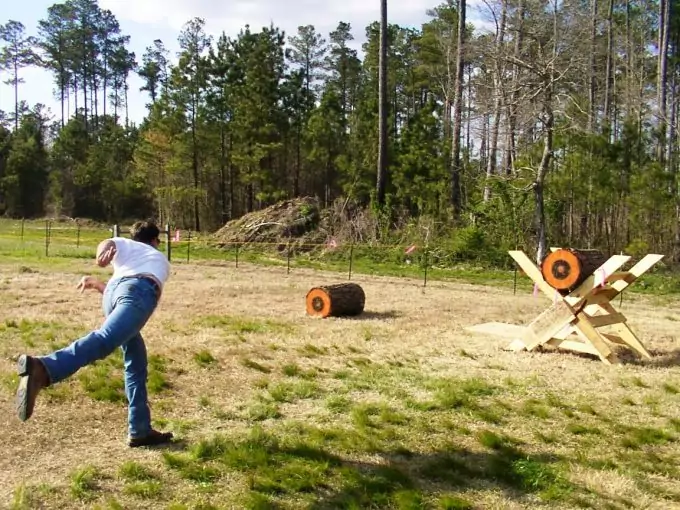
All-in-all, knife throwing is a great art and fun sport. It’s also great as nothing more than a backyard hobby. If you are considering taking up knife throwing, do your due diligence with training yourself and having the right equipment.
Don’t rob yourself of taking the time to ensure the proper safety procedures. If you practice with friends, always make it an alcohol-free activity. Having a hobby that translates to a survival skill might be convenient one day. Most of all, have a good time with it!

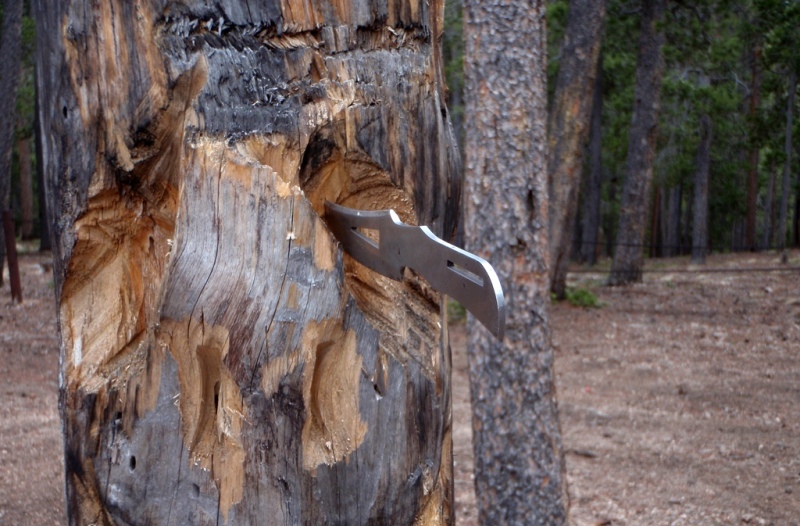

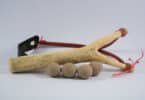


This looks like a fun thing to try with friends :)
Also, knife throwing is an important skill, which you can transform into a hobby. You just have to learn the basics. This article takes you through the beginner skills that will help create a pro out of you.
Wow. This is one skill that I have always wanted to learn. I have always been curious about the way of the ninja and I find the design of throwing knives to be unique and very detailed. I’ll probably look up on where to train but do you have a list of training centers?
Yes, it looks fun. However, don’t try learning by yourself. Go to a trainer!
:) I wouldn’t recommend this unless you are all trained in the art of knife throwing
Thank you for great guide about use knife.
Knife throwing is one of the many skills that any outdoorsman requires. It is a sport, but you can put it into good use, especially when scaring off an attacker or when hunting small game.
Impressive article.
I bought some throwing knives at a local thrift store but it turned out they were not balanced properly. So no matter how much me and my kids tried we couldn’t get it to stick into a wooden fence we were throwing them at.
I will definitely buy proper knives, use you guide and perfect this skill.
Balance is indeed an issue as far as throwing knives is concerned. However, even if you find the ideal knives, you should consider buying a set. When you are learning how to throw knives, you will certainly want multiple knives so as to build consistency and to minimize walking back and forth from the target.
Throwing knives is all about rotation. I prefer throwing long knives rather than short knives mainly because the short ones rotate more rapidly and have no weight.
That’s true, Ricky, but with practice, you may find short knives to be convenient.
Knife throwing is an art and sport meant for entertainment, safety, and survival measures during emergency and risky situations. Participants need to undergo training in order to learn the skills and techniques like knife grip and throwing stance. Indulging in this practice will enable them to be perfect and hit the target constantly during the exercise. However, is this game really a safety and survival strategy for emergency situations?
Knife throwing is a great technique, which can come in handy when scaring off an aggressor. It is also an amazing sport.
What a great thing to learn. It is fun to do and an important thing in times of survival situations. Do you recommend buying a set of knives or is it better to go to my local blacksmith, and have him make a set of knives for me? Because I think it is easier to learn if the knife is customized to your own grip or such.
It is easier to learn knife throwing if you have a set of knives. This will help with consistency and speed. You can choose to use custom-made or commercially produced knives, but make sure the knives you buy or have your blacksmith make are properly balanced.
Can you recommend any set of knives for starters? I am currently looking at the Smith and Wesson SWTK10CP but it is a bit pricey ($30). Is it worth it at this price? Another concern I have is that how often do you need to sharpen the knives?
I think the Ridge Runner 12 Piece Tornado throwing knives are the best choice for beginners. You can still try other models. Throwing knives do not need too much or frequent sharpening.
Throwing knives is an activity that has been around for a long time and was mainly used for hunting but nowadays one can easily practice it for self-defense especially in extreme situations. This guide is a big help for beginners since it provides basic information starting from the choice of knives, grip, and throwing motions.
Knife throwing isn’t just a skill, it is an interest that most people have perfected and used for self-defense. The skill is quite easy to master, especially with the help of this posting.
What are your thoughts on timing and the force that is applied to the knife? I believe timing is very important when it comes to throwing knives. All knives have the tendency to spin more when they are thrown harder, letting go too soon will give it less spin. If more force is put behind the knife when it is thrown it increases the probability of an incorrect releasing time of the knife, as a consequence a person’s throwing style will be damaged.
To achieve the appropriate timing, you have to be loose, relaxed, and focused. Make sure you use a technique that works best for you, such as throwing by the blade or by the handle.
David, just stumbled on this post and honored to see you list me as #1 in your list of top throwers. David R. Adamovich, Ed.D., aka The Great Throwdini.